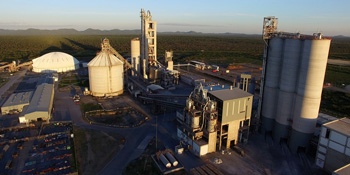
Meat prices expected to experience a steady decline through 2024 – FAO

The Meat Board of Namibia recently reported that the FAO meat price index, which comprises the weighted average of poultry, pork, bovine, and ovine (likely including goat), averaged 114.2 points in September, down 1.2 points (1%) from August and 6.1 points (5%) from its value a year ago.
This is according to information released recently in the Meat Chronicle report by the Meat Board of Namibia.
“International pig meat prices fell, underpinned by weak import demand from leading importing countries, especially China. World poultry meat prices also dropped, reflecting abundant supplies of leading global suppliers, especially Brazil. Ovine meat prices declined for the fifth straight month, albeit at a slower pace, driven by high supplies from Australia, despite steady demands from China and the Middle East. In contrast, strong import demand for lean bovine meat, especially in the United States of America, led to a rebound in international prices, notwithstanding high export supplies from Brazil and Australia.”
“The FAO meat price index increased by 8% in 2022. Prices peaked in June 2022 before steadily declining. Most prices are expected to soften further through 2023, bottom out in 2024, and then increase modestly over the coming decade. This rise is unlikely to outpace general inflation. Despite rising prices, meat production expanded globally by just 2% in 2022, curtailed by factors such as animal diseases and increasing input costs, particularly feed and extreme weather conditions,” according to the Meat Chronicle report by the Meat Board.
“Income and prices are critical drivers of per capita consumption. The latest edition of the OECD-FAO outlook suggests that meat production could rise by 14% by 2032. However, the same outlook projects that the global average per capita consumption of meat will increase by 3% from the 2020-2022 base period to 2032. The global meat trade is projected to grow much slower due to reductions in Chinese imports as production recovers fully from African swine fever (ASF). It therefore could be deduced that prices would be contained to some extent.”
Besides, this is according to information contained in the latest Outlook Report 2023-2032 from the nonprofit information organization, Bureau for Food and Agricultural Policy (BFAP). “It is always good agricultural practice to acknowledge outlooks performed by reputable organizations, like the BFAP,” Meat Board Chief Executive Paul Strydom said.
Meanwhile, on the other side of the border in South Africa, consumers have had a difficult three years due to weak economic growth, persistently high inflation, and increased lending rates. As a result, when the affordability of higher-value products such as meat becomes an issue, consumers move to cheaper meat types or cuts and other “basic” staple foods.
“The effect of decreasing spending power became clear with farm-gate beef prices declining sharply. South African exports due to animal disease constraints (like foot-and-mouth disease (FMD) and increasing input costs, particularly feed,” added Strydom.













































